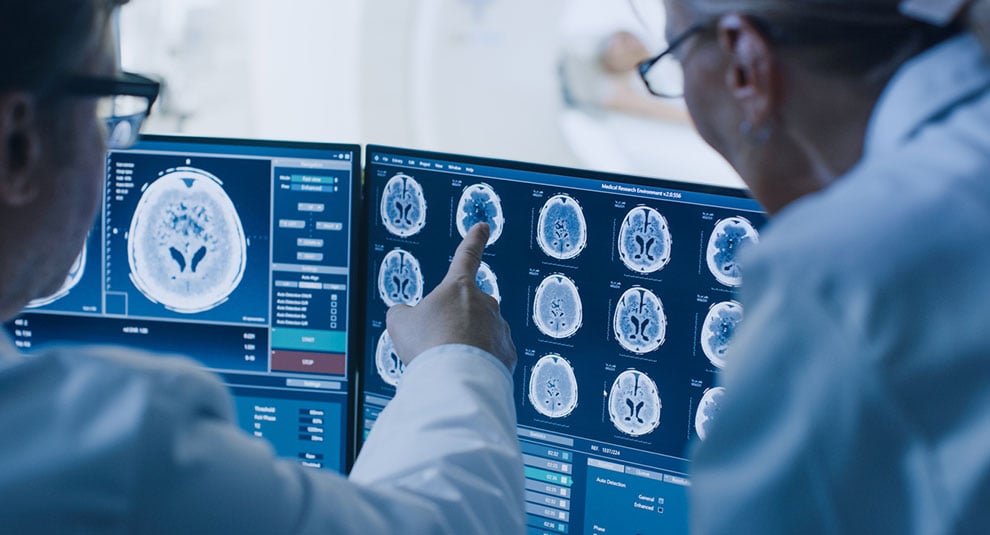Glioma vs. Glioblastoma: What Is the Difference?

Glioma and glioblastoma are both types of brain cancer, but there are some important differences between the two. “Glioma” is an umbrella term used for primary brain tumors that arise in glial cells. As specialized non-nerve cells in the nervous system, glial cells provide support, insulation and nourishment to nerve cells (neurons), playing a vital role in maintaining the overall health and function of the brain and spinal cord.
Glioblastoma is an aggressive type of glioma that originates in astrocytes, which are star-shaped glial cells that make up the majority of the cells in the central nervous system (CNS). Astrocytes perform many important functions, including clearing excess neurotransmitters (the body’s chemical messengers), stabilizing and regulating the blood-brain barrier and promoting the transmission of signals between the brain and other parts of the central nervous system.
Glioma and glioblastoma causes and risk factors
The causes of glioma, including the aggressive form glioblastoma, are not yet fully understood. Possible risk factors include:
- Genetic predisposition
- Frequent or high-dose exposure to ionizing radiation
- Radiation therapy delivered to the head, neck or brain at a young age
- Certain hereditary conditions, such as neurofibromatosis
In the case of glioblastoma, increasing age is also a risk factor. With that said, most gliomas occur sporadically with no identifiable cause. Research is ongoing to help scientists better understand the complex interplay of genetic and environmental factors that may contribute to the development of glioma.
Glioma and glioblastoma signs and symptoms
The signs of glioma, including high-grade glioblastoma, can vary based on the location and size of the tumor. Some common symptoms include:
- Persistent headaches
- Seizures
- Cognitive decline
- Personality or mood changes
- Muscle weakness or numbness in the arms and legs
- Difficulties with balance and coordination
- Changes in vision or speech
Because glioma symptoms can be nonspecific and mimic those of other neurological conditions, early detection and a comprehensive medical evaluation are crucial. A timely diagnosis can significantly impact treatment outcomes.
Glioma and glioblastoma treatment options
Because glioma tends to infiltrate the brain, the tumors can be challenging to remove. Any cancerous cells that remain after surgical treatment can continue to grow or become more aggressive. Therefore, while surgery is usually an important part of glioma treatment, radiation therapy or chemotherapy might be needed as well.
Fast-growing glioblastoma is often treated with a combination of radiation therapy and low-dose chemotherapy followed by additional chemotherapy. Less aggressive types of glioma may be treated with radiation therapy alone or followed by chemotherapy.
After completing treatment, most patients have periodic magnetic resonance imaging (MRI) scans and follow-up appointments to monitor for possible cancer recurrence and detect it early if it occurs.
Benefit from world-class care at Moffitt Cancer Center
The multispecialty team in Moffitt’s Neuro-Oncology Program takes a comprehensive approach to brain tumor treatment. After thoroughly reviewing each patient’s case, we develop a tailored treatment plan to help them achieve the best possible outcome and quality of life.
As a National Cancer Institute-designated Comprehensive Cancer Center, Moffitt is a recognized trailblazer in cancer research. Through our robust clinical trials portfolio, our patients can be among the first to benefit from promising new treatments that are not yet available elsewhere.
If you would like to learn more about glioma, you can request an appointment with a specialist in our Neuro-Oncology Program by calling 1-888-663-3488 or submitting a new patient registration form online. We do not require referrals.
